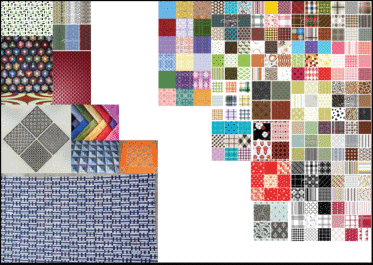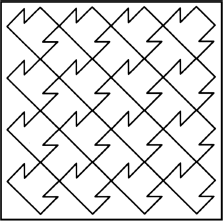C.3 Design Phase
In the design phase, the solar cell's front contact pattern will be redesigned to make the cell and PV module more attractive. The analyses, demands, and wishes provide functional input, but little direction in terms of aesthetics. Four categories are considered in developing design directions: architecture, nature, art, and textiles. Several collages are made with these categories. Figure C.3.1 depicts a collage with textiles.
Figure C.3.1 Collage textiles

Other patterns are examined by scanning pattern books. Some examples are Chinese lattice design, Indian patterns, motifs, panels, folk art, floral patterns, and borders. Figure C.3.2 shows an example of a pattern.
Figure C.3.2 Example of a pattern

The generation of patterns is executed in three steps:
The redesigned solar cell must have an attractive appearance, leading to the following direction: The aesthetical value must increase, while a small efficiency loss due to the redesign is acceptable.
A single solar cell can have a beautiful design with a small contact pattern. However, this pattern is not visible from a distance. The idea is to have single ...
Get The Power of Design: Product Innovation in Sustainable Energy Technologies now with the O’Reilly learning platform.
O’Reilly members experience books, live events, courses curated by job role, and more from O’Reilly and nearly 200 top publishers.

